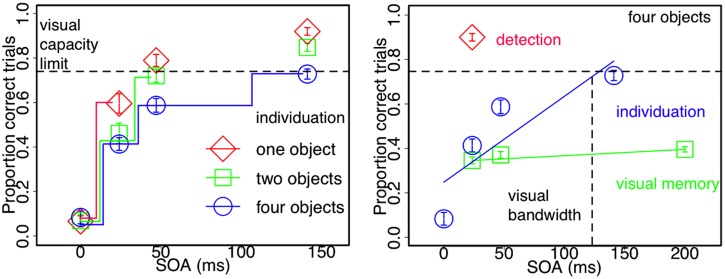FIGURE 3.
Visuo-spatial object processing under conditions of integration masking. Leftpanel: enumeration performance for one, two, and four objects as a function of stimulus onset a synchrony (SOA). Individuation capacity increases in steps as a function of SOA and hence less integration masking. One object can be individuated after 25 ms, two objects require 50 ms and the full-set of four objects (the average visuo-spatial capacity limit) are only stabilized within the entire life time of sensory persistence (100 ms). Rightpanel: detection is faster and visual memory slower than individuation. The onset of four visual stimuli can be reliably detected with as little as 25 ms between mask and target onsets. Individuation of four objects, however, increases in steps for up to 100 ms as a function of SOA. Visual memory for four objects that requires identity integration with individuated object-files remains stable and low across SOAs (Figures adapted with permission from Wutz et al., 2012 and Wutz and Melcher, 2013).

